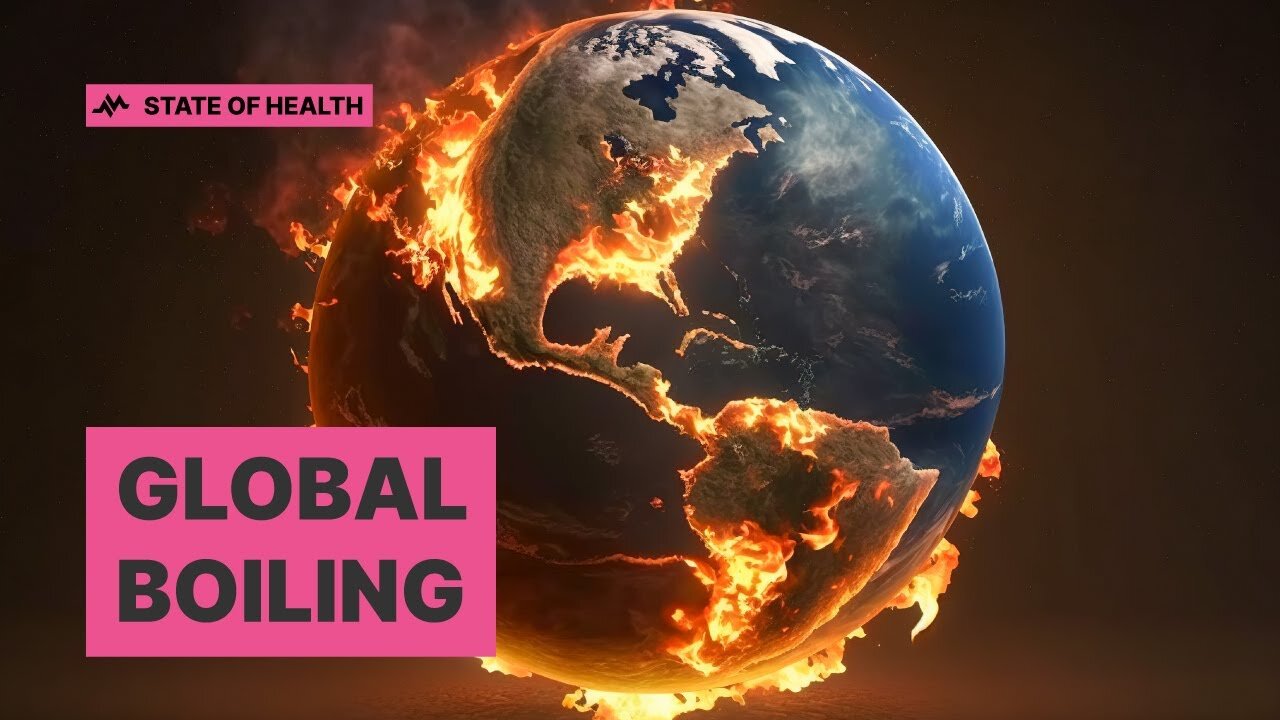Premium Only Content

Is This a Climate Emergency? These Horrific Weather Events from Long Ago Tell the True Story
This has been the summer of "extreme heat," with the phrase being used over and over in news coverage as if to signal that a climate emergency has arrived.
We're told 2023 is on track to be the hottest year on record, while two-thirds of Americans in a PBS/Marist Poll now say Climate Change is affecting the weather.
Denver resident Mike Barela said, "People are starting to realize that there is an effect." Miami resident Stephen Escudero said, "This definitely feels like we're in that point of no return that people have talked about for a long time."
Some are calling on President Biden to declare a 'climate emergency' after the deadly Maui wildfire and a summer of searing temperatures.
And UN Secretary-General António Guterres has called for immediate action on climate change, saying, "The era of global warming has ended; the era of global boiling has arrived."
Weather history, however, tells a different story – that the worst weather events, including the hottest years, have all been in the past.
slider img 2
The worst hurricane in history? The Great Hurricane of 1780, which killed over 20,000 people in the Caribbean.
The worst wildfire in U.S. history? The Peshtigo Fire in Wisconsin in 1871 killed at least 1,500 people and burned over a million acres.
The worst flood in world history was in 1931 – the Yangtze River Flood in China, which killed almost 4 million people.
The worst flood in U.S. history was in 1889, in Johnston, Pennsylvania.
The deadliest tornado in recorded U.S. history was in 1925. The Tri-State Tornado, which struck Missouri, Illinois, and Indiana, killing some 700 people.
And the hottest year was not 2023, but 1936. In 1936, 21 states had their all-time temperature records.
Steve Milloy of Junkscience.com said, "We know in the United States that the 1930s were extremely hot – 1936 is the hottest year on record in the United States and probably throughout the northern Hemisphere."
Some northern cities saw temperatures between 115 and 120 degrees that year. Many thousands died across the country and the resulting Dust Bowl forced the migration of 3 and half million climate refugees out of the Great Plains and Midwest.
There is no dispute that the Earth has been warming incrementally since an extremely cold period known as Little Ice Age ended in 1850.
But Weatherbell Chief Forecaster Joe Bastardi blames this summer's sweltering temperatures on a huge amount of water vapor created by an immense underwater volcanic eruption in Tonga last year that was 1,000 times more powerful than the nuclear bomb dropped on Hiroshima, and by warming oceans.
Bastardi told us, "There's been an increase in what we call geothermal spreading since the early 1990s. And what it does is it develops a cumulative buildup of heat in the oceans, which then has to be released through the El Ninos, which then puts all sort of water vapor in the air, which then leads to the warming that you're seeing. It's all water vapor."
There have also been record-breaking cold temperatures this summer, but that weather news is ignored.
Milloy says, "It's a very complicated issue that the alarmists just like want to boil down to 'fossil fuel use is destroying the planet.' The whole climate is a lot more complicated."
Summers in the U.S. are supposed to be hot, something even the Babylon Bee noticed: Global Warming Mysteriously Spikes Every Year Between June And August, Experts Say. https://www2.cbn.com/news/us/climate-emergency-these-horrific-weather-events-long-ago-tell-true-story
-
 56:04
56:04
Oppenheimer Ranch Project
4 months agoSelf Assembling Nano Structures In mRNA Products From Moderna and Pfizer - AI Chatbot Brainwashing
5.12K45 -
 33:11
33:11
BonginoReport
4 hours agoYou're the Media Now (Ep.128) - 01/29/2025
24.7K68 -
 1:00:57
1:00:57
The Crypto Report
21 hours agoBREAKING CRYPTO NEWS! (PEPE, SHIB, DOGE, SUI, SOL, BTC, HBAR, XRP, CRO)
3.14K2 -
 LIVE
LIVE
Vigilant News Network
15 hours agoBill Gates Admits MISTAKE For Cozying Up to SEX OFFENDER | The Daily Dose
1,168 watching -
 LIVE
LIVE
Jeff Ahern
1 hour agoNever woke Wednesday with Jeff Ahern (The leftist Gravy train ends)
551 watching -
 18:51
18:51
Neil McCoy-Ward
2 hours agoNetflix Users May Be FORCED To Buy A TV Licence!! (This Is Getting CRAZY!)
3.81K4 -
 1:26:43
1:26:43
Game On!
11 hours ago $1.78 earnedThe Debate is OVER! It was ALL Brady, not Belichick!
9.21K1 -
 17:53
17:53
Producer Michael
20 hours agoI'VE NEVER SEEN SO MANY LIMITED EDITION WATCHES!
33.4K10 -
 12:04
12:04
SOFTDRINKTV
12 hours ago $11.07 earnedAre NBA 2K's Graphics Getting Worse?
80.4K7 -
 30:54
30:54
World Nomac
20 hours agoSurprising honest locals in Tondo Philippines with rewards 🇵🇭
43.9K1